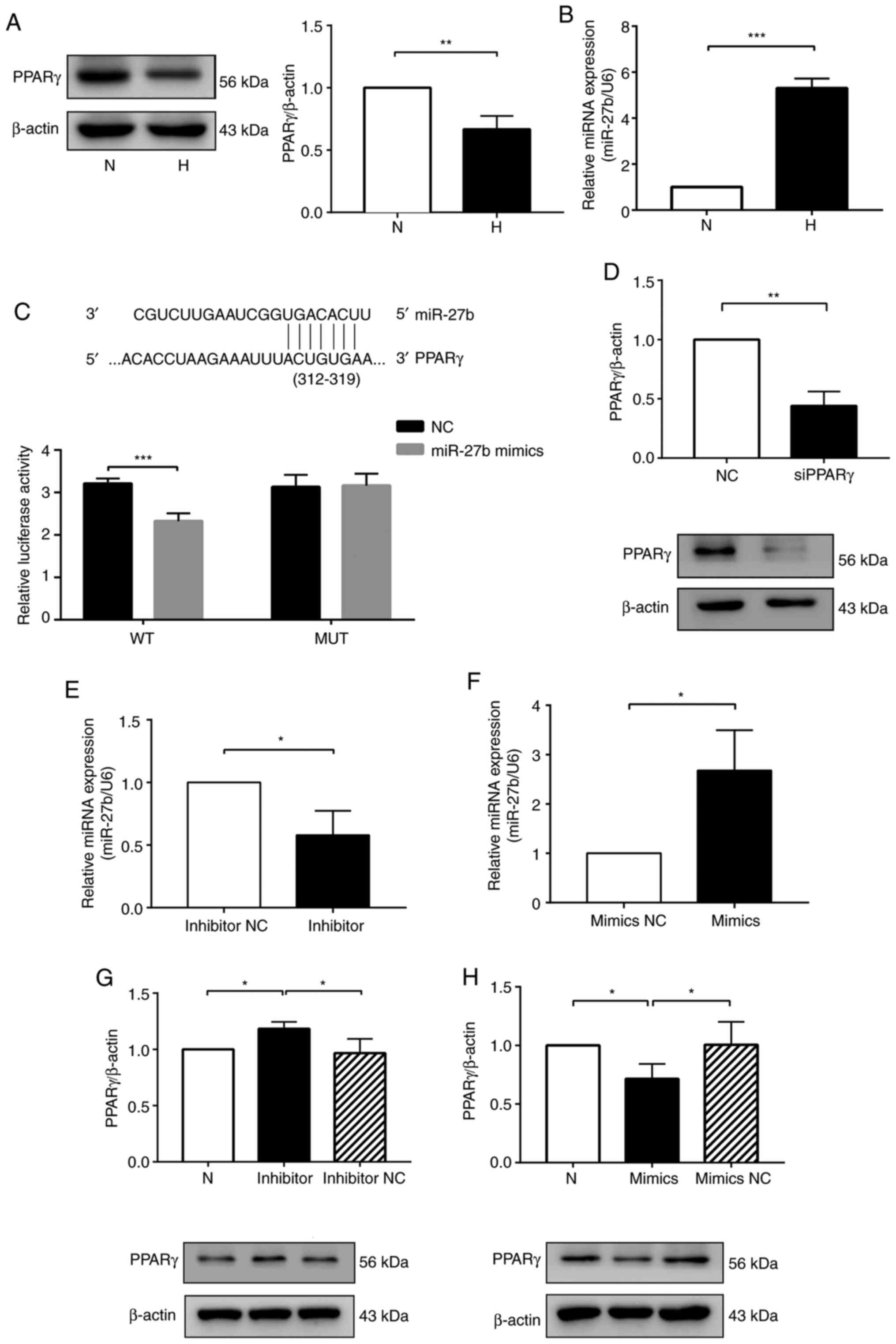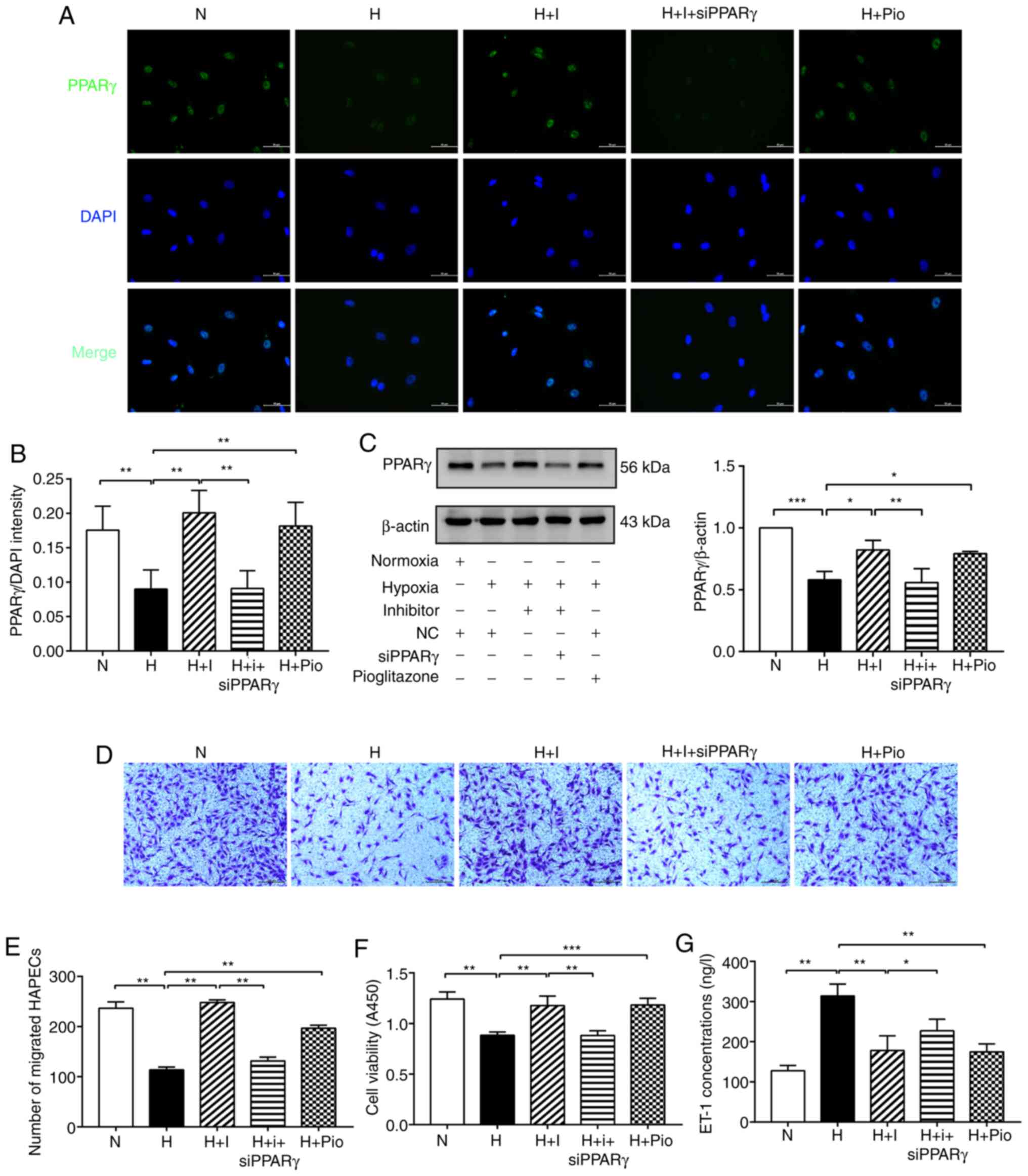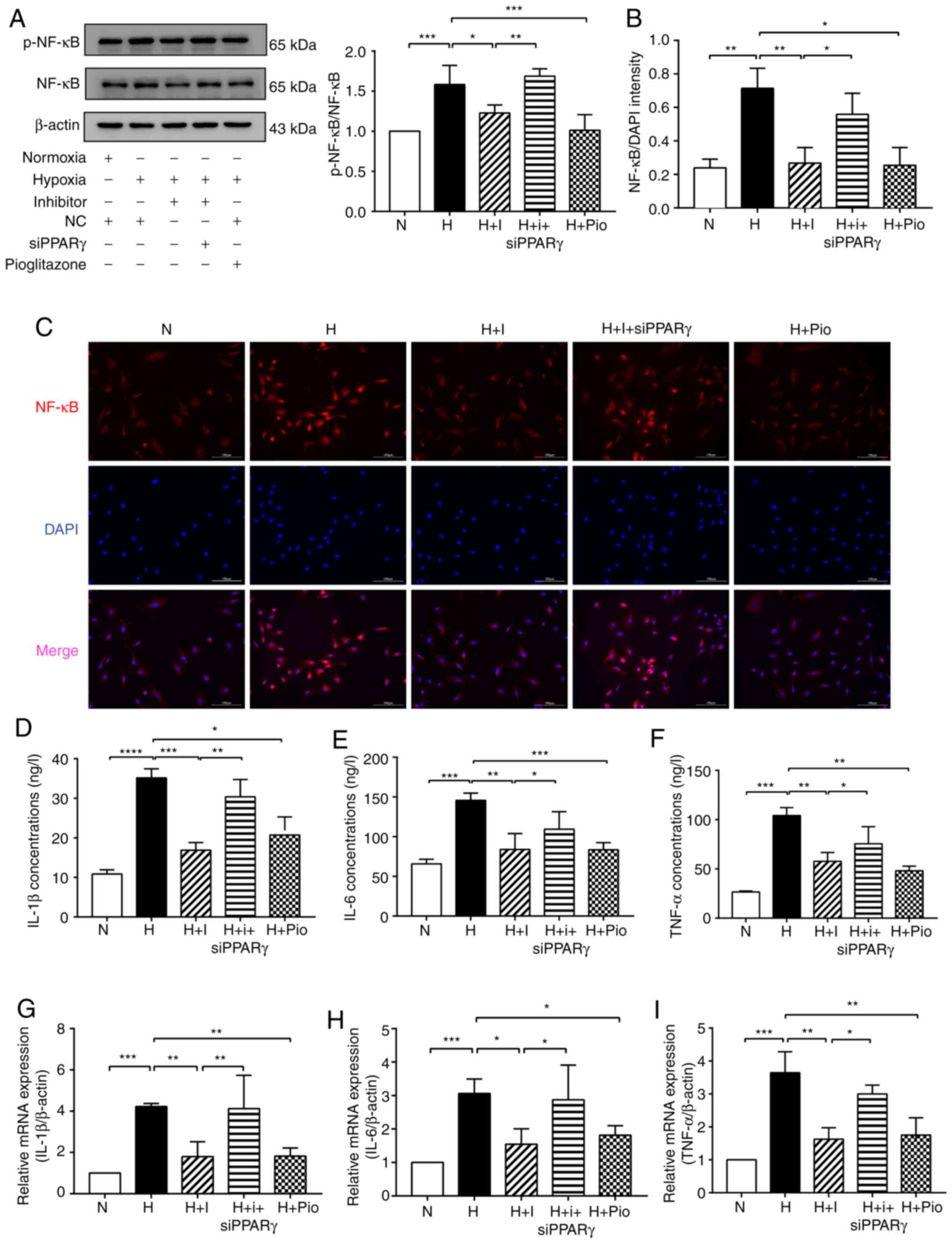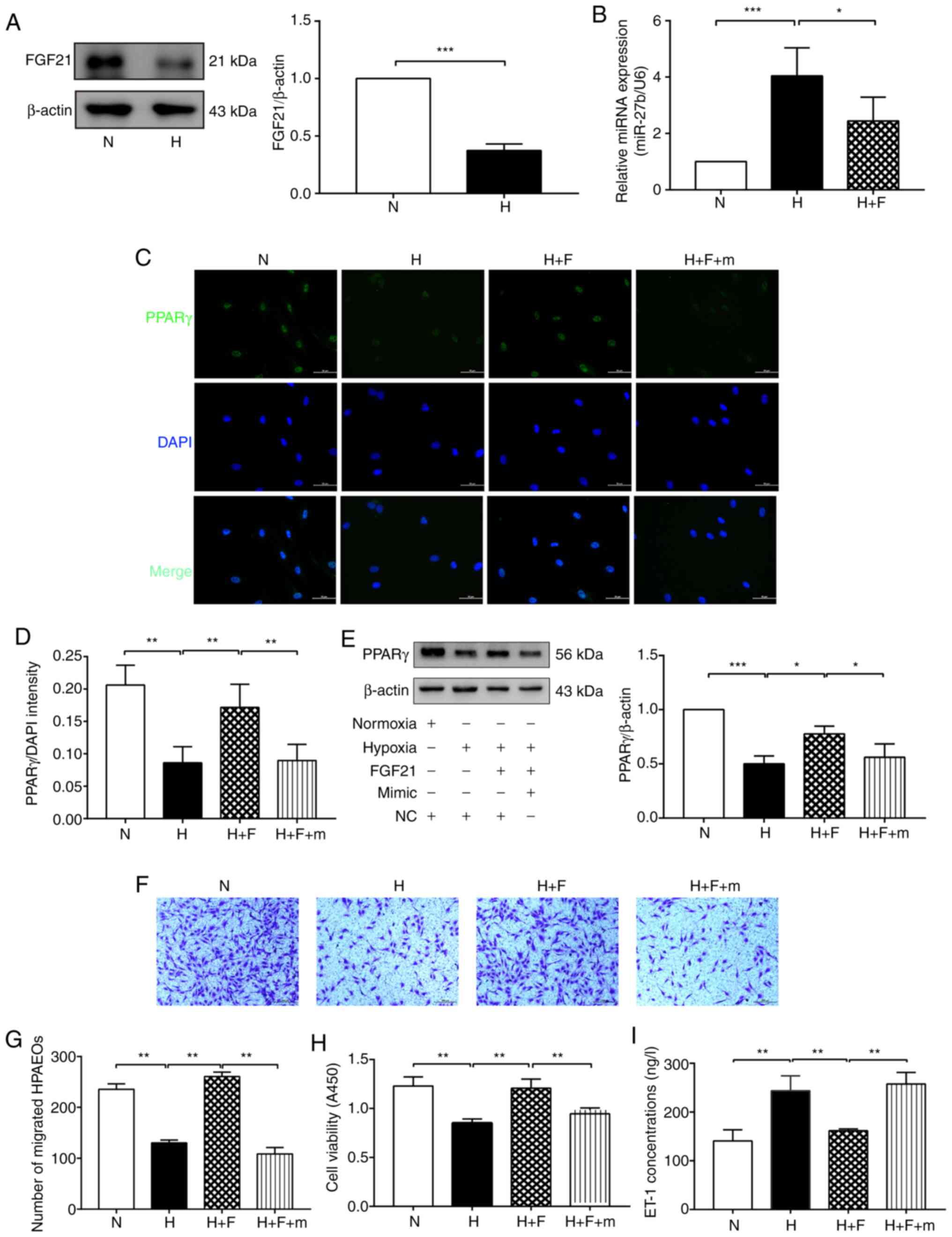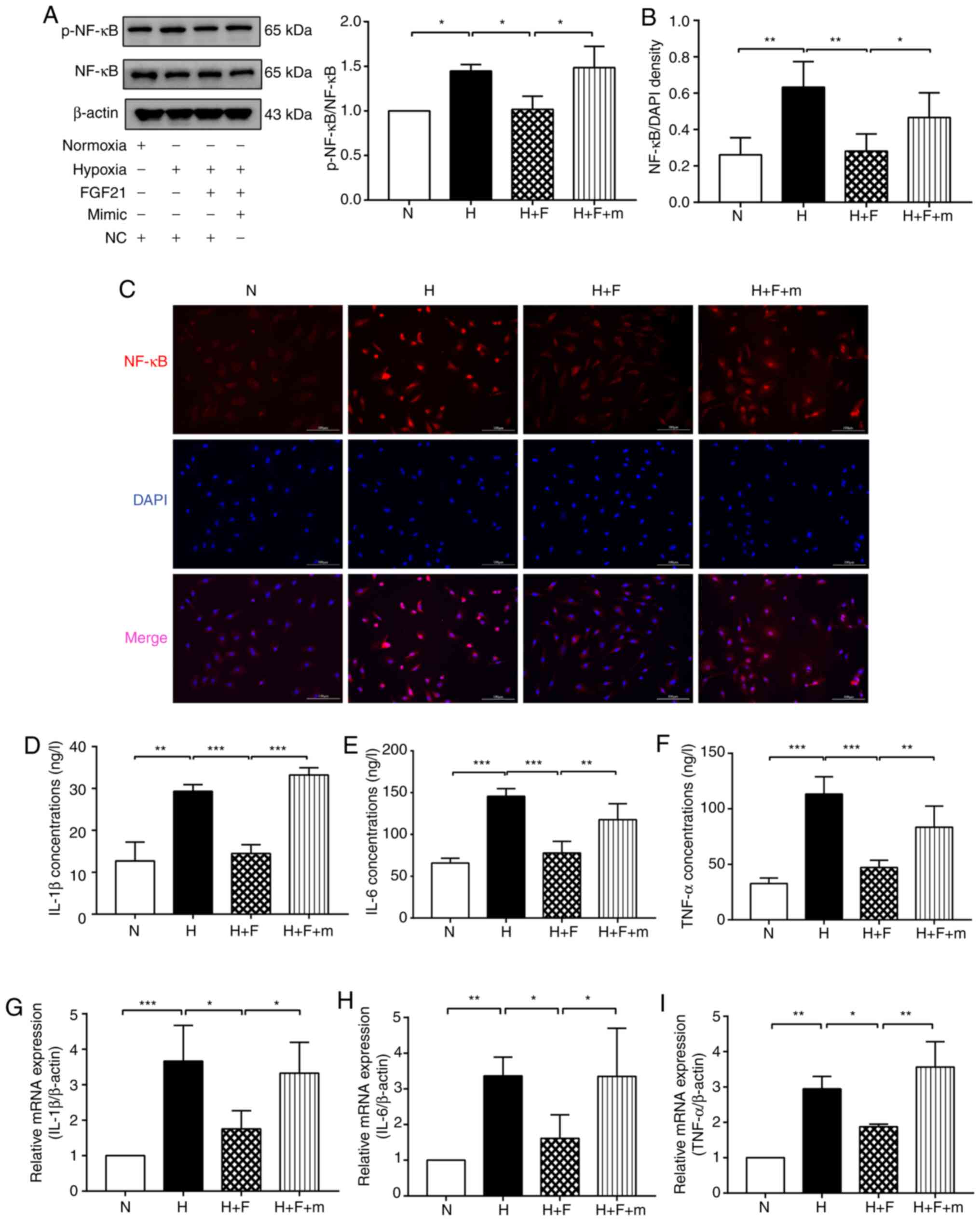|
1
|
Thompson AAR and Lawrie A: Targeting
vascular remodeling to treat pulmonary arterial hypertension.
Trends Mol Med. 23:31–45. 2017. View Article : Google Scholar
|
|
2
|
Lan NSH, Massam BD, Kulkarni SS and Lang
CC: Pulmonary arterial hypertension: Pathophysiology and treatment.
Diseases. 6:382018. View Article : Google Scholar :
|
|
3
|
Rafikova O, Al Ghouleh I and Rafikov R:
Focus on early events: Pathogenesis of pulmonary arterial
hypertension development. Antioxid Redox Signal. 31:933–953. 2019.
View Article : Google Scholar : PubMed/NCBI
|
|
4
|
Baptista R, Meireles J, Agapito A, Castro
G, da Silva AM, Shiang T, Gonçalves F, Robalo-Martins S,
Nunes-Diogo A and Reis A: Pulmonary hypertension in Portugal: First
data from a nationwide registry. Biomed Res Int. 2013:4895742013.
View Article : Google Scholar : PubMed/NCBI
|
|
5
|
Pelham CJ, Ketsawatsomkron P, Groh S,
Grobe JL, de Lange WJ, Ibeawuchi SR, Keen HL, Weatherford ET,
Faraci FM and Sigmund CD: Cullin-3 regulates vascular smooth muscle
function and arterial blood pressure via PPARγ and RhoA/Rho-kinase.
Cell Metab. 16:462–472. 2012. View Article : Google Scholar : PubMed/NCBI
|
|
6
|
Hansmann G and Zamanian RT: PPARgamma
activation: A potential treatment for pulmonary hypertension. Sci
Transl Med. 1:12ps142009. View Article : Google Scholar
|
|
7
|
Diebold I, Hennigs JK, Miyagawa K, Li CG,
Nickel NP, Kaschwich M, Cao A, Wang L, Reddy S, Chen PI, et al:
BMPR2 preserves mitochondrial function and DNA during reoxygenation
to promote endothelial cell survival and reverse pulmonary
hypertension. Cell Metab. 21:596–608. 2015. View Article : Google Scholar : PubMed/NCBI
|
|
8
|
Archer SL, Marsboom G, Kim GH, Zhang HJ,
Toth PT, Svensson EC, Dyck JR, Gomberg-Maitland M, Thébaud B,
Husain AN, et al: Epigenetic attenuation of mitochondrial
superoxide dismutase 2 in pulmonary arterial hypertension: A basis
for excessive cell proliferation and a new therapeutic target.
Circulation. 121:2661–2671. 2010. View Article : Google Scholar : PubMed/NCBI
|
|
9
|
Cai G, Liu J, Wang M, Su L, Cai M, Huang
K, Li X, Li M, Wang L and Huang X: Mutual promotion of FGF21 and
PPARγ attenuates hypoxia-induced pulmonary hypertension. Exp Biol
Med (Maywood). 244:252–261. 2019. View Article : Google Scholar :
|
|
10
|
Small EM and Olson EN: Pervasive roles of
microRNAs in cardiovascular biology. Nature. 469:336–342. 2011.
View Article : Google Scholar : PubMed/NCBI
|
|
11
|
Tan H, Yao H, Lie Z, Chen G, Lin S and
Zhang Y: MicroRNA-30a-5p promotes proliferation and inhibits
apoptosis of human pulmonary artery endothelial cells under hypoxia
by targeting YKL-40. Mol Med Rep. 20:236–244. 2019.PubMed/NCBI
|
|
12
|
Zhao H, Guo Y, Sun Y, Zhang N and Wang X:
miR-181a/b-5p ameliorates inflammatory response in
monocrotaline-induced pulmonary arterial hypertension by targeting
endocan. J Cell Physiol. 235:4422–4433. 2020. View Article : Google Scholar
|
|
13
|
Zhao M, Chen N, Li X, Lin L and Chen X:
MiR-19a modulates hypoxia-mediated cell proliferation and migration
via repressing PTEN in human pulmonary arterial smooth muscle. Life
Sci. 239:1169282019. View Article : Google Scholar : PubMed/NCBI
|
|
14
|
Mondejar-Parreño G, Callejo M, Barreira B,
Morales-Cano D, Esquivel-Ruiz S, Filice M, Moreno L, Cogolludo A
and Perez-Vizcaino F: miR-1 induces endothelial dysfunction in rat
pulmonary arteries. J Physiol Biochem. 75:519–529. 2019. View Article : Google Scholar : PubMed/NCBI
|
|
15
|
Rong X, Ge D, Shen D, Chen X, Wang X,
Zhang L, Jia C, Zeng J, He Y, Qiu H, et al: miR-27b suppresses
endothelial cell proliferation and migration by targeting Smad7 in
kawasaki disease. Cell Physiol Biochem. 48:1804–1814. 2018.
View Article : Google Scholar : PubMed/NCBI
|
|
16
|
Bi R, Bao C, Jiang L, Liu H, Yang Y, Mei J
and Ding F: MicroRNA-27b plays a role in pulmonary arterial
hypertension by modulating peroxisome proliferator-activated
receptor γ dependent Hsp90-eNOS signaling and nitric oxide
production. Biochem Biophys Res Commun. 460:469–475. 2015.
View Article : Google Scholar : PubMed/NCBI
|
|
17
|
Geng L, Lam KSL and Xu A: The therapeutic
potential of FGF21 in metabolic diseases: From bench to clinic. Nat
Rev Endocrinol. 16:654–667. 2020. View Article : Google Scholar : PubMed/NCBI
|
|
18
|
Chen A, Liu J, Zhu J, Wang X, Xu Z, Cui Z,
Yao D, Huang Z, Xu M, Chen M, et al: FGF21 attenuates
hypoxia-induced dysfunction and apoptosis in HPAECs through
alleviating endoplasmic reticulum stress. Int J Mol Med.
42:1684–1694. 2018.PubMed/NCBI
|
|
19
|
Yu Y, He J, Li S, Song L, Guo X, Yao W,
Zou D, Gao X, Liu Y, Bai F, et al: Fibroblast growth factor 21
(FGF21) inhibits macrophage-mediated inflammation by activating
Nrf2 and suppressing the NF-κB signaling pathway. Int
Immunopharmacol. 38:144–152. 2016. View Article : Google Scholar : PubMed/NCBI
|
|
20
|
Liu J, Cai G, Li M, Fan S, Yao B, Ping W,
Huang Z, Cai H, Dai Y, Wang L and Huang X: Fibroblast growth factor
21 attenuates hypoxia-induced pulmonary hypertension by
upregulating PPARγ expression and suppressing inflammatory cytokine
levels. Biochem Biophys Res Commun. 504:478–484. 2018. View Article : Google Scholar : PubMed/NCBI
|
|
21
|
Guo Y, Luo F, Yi Y and Xu D: Fibroblast
growth factor 21 potentially inhibits microRNA-33 expression to
affect macrophage actions. Lipids Health Dis. 15:2082016.
View Article : Google Scholar : PubMed/NCBI
|
|
22
|
Huang X, Mao W, Zhang T, Wang M, Wang X,
Li Y, Zhang L, Yao D, Cai X and Wang L: Baicalin promotes apoptosis
and inhibits proliferation and migration of hypoxia-induced
pulmonary artery smooth muscle cells by up-regulating A2a receptor
via the SDF-1/CXCR4 signaling pathway. BMC Complement Altern Med.
18:3302018. View Article : Google Scholar : PubMed/NCBI
|
|
23
|
Livak KJ and Schmittgen TD: Analysis of
relative gene expression data using real-time quantitative PCR and
the 2(-Delta Delta C(T)) method. Methods. 25:402–408. 2001.
View Article : Google Scholar
|
|
24
|
Cao Y, Zhang X, Wang L, Yang Q, Ma Q, Xu
J, Wang J, Kovacs L, Ayon RJ, Liu Z, et al: PFKFB3-mediated
endothelial glycolysis promotes pulmonary hypertension. Proc Natl
Acad Sci USA. 116:13394–13403. 2019. View Article : Google Scholar : PubMed/NCBI
|
|
25
|
Ban Y, Liu Y, Li Y, Zhang Y, Xiao L, Gu Y,
Chen S, Zhao B, Chen C and Wang N: S-nitrosation impairs KLF4
activity and instigates endothelial dysfunction in pulmonary
arterial hypertension. Redox Biol. 21:1010992019. View Article : Google Scholar : PubMed/NCBI
|
|
26
|
Kang BY, Park K, Kleinhenz JM, Murphy TC,
Sutliff RL, Archer D and Hart CM: Peroxisome proliferator-activated
receptor γ regulates the V-Ets avian erythroblastosis virus E26
oncogene homolog 1/microRNA-27a axis to reduce endothelin-1 and
endothelial dysfunction in the sickle cell mouse lung. Am J Respir
Cell Mol Biol. 56:131–144. 2017. View Article : Google Scholar :
|
|
27
|
Legchenko E, Chouvarine P, Borchert P,
Fernandez-Gonzalez A, Snay E, Meier M, Maegel L, Mitsialis SA,
Rog-Zielinska EA, Kourembanas S, et al: PPARγ agonist pioglitazone
reverses pulmonary hypertension and prevents right heart failure
via fatty acid oxidation. Sci Transl Med. 10:eaao03032018.
View Article : Google Scholar
|
|
28
|
Hannafon BN, Cai A, Calloway CL, Xu YF,
Zhang R, Fung KM and Ding WQ: miR-23b and miR-27b are oncogenic
microRNAs in breast cancer: Evidence from a CRISPR/Cas9 deletion
study. BMC Cancer. 19:6422019. View Article : Google Scholar : PubMed/NCBI
|
|
29
|
Yang X, Chen J, Liao Y, Huang L, Wen C,
Lin M, Li W, Zhu Y, Wu X, Iwamoto A, et al: MiR-27b-3p promotes
migration and invasion in colorectal cancer cells by targeting
HOXA10. Biosci Rep. 39:BSR201910872019. View Article : Google Scholar : PubMed/NCBI
|
|
30
|
Chen J, Wang Y, Du G, Zhang W, Cao T, Shi
L, Wang Y, Mi J and Tang G: Down-regulation of miRNA-27b-3p
suppresses keratinocytes apoptosis in oral lichen planus. J Cell
Mol Med. 23:4326–4337. 2019. View Article : Google Scholar : PubMed/NCBI
|
|
31
|
Huang Y, Huang L, Zhu G, Pei Z and Zhang
W: Downregulated microRNA-27b attenuates lipopolysaccharide-induced
acute lung injury via activation of NF-E2-related factor 2 and
inhibition of nuclear factor κB signaling pathway. J Cell Physiol.
234:6023–6032. 2019. View Article : Google Scholar
|
|
32
|
Wang J, Song Y, Zhang Y, Xiao H, Sun Q,
Hou N, Guo S, Wang Y, Fan K, Zhan D, et al: Cardiomyocyte
overexpression of miR-27b induces cardiac hypertrophy and
dysfunction in mice. Cell Res. 22:516–527. 2012. View Article : Google Scholar :
|
|
33
|
Pan X, Shao Y, Wu F, Wang Y, Xiong R,
Zheng J, Tian H, Wang B, Wang Y, Zhang Y, et al: FGF21 prevents
angiotensin II-induced hypertension and vascular dysfunction by
activation of ACE2/angiotensin-(1-7) axis in mice. Cell Metab.
27:1323–1337.e5. 2018. View Article : Google Scholar : PubMed/NCBI
|
|
34
|
Kharitonenkov A, Shiyanova TL, Koester A,
Ford AM, Micanovic R, Galbreath EJ, Sandusky GE, Hammond LJ, Moyers
JS, Owens RA, et al: FGF-21 as a novel metabolic regulator. J Clin
Invest. 115:1627–1635. 2005. View Article : Google Scholar : PubMed/NCBI
|
|
35
|
Ruan CC, Kong LR, Chen XH, Ma Y, Pan XX,
Zhang ZB and Gao PJ: A2A receptor activation attenuates
hypertensive cardiac remodeling via promoting brown adipose
tissue-derived FGF21. Cell Metab. 28:476–489.e5. 2018. View Article : Google Scholar
|















